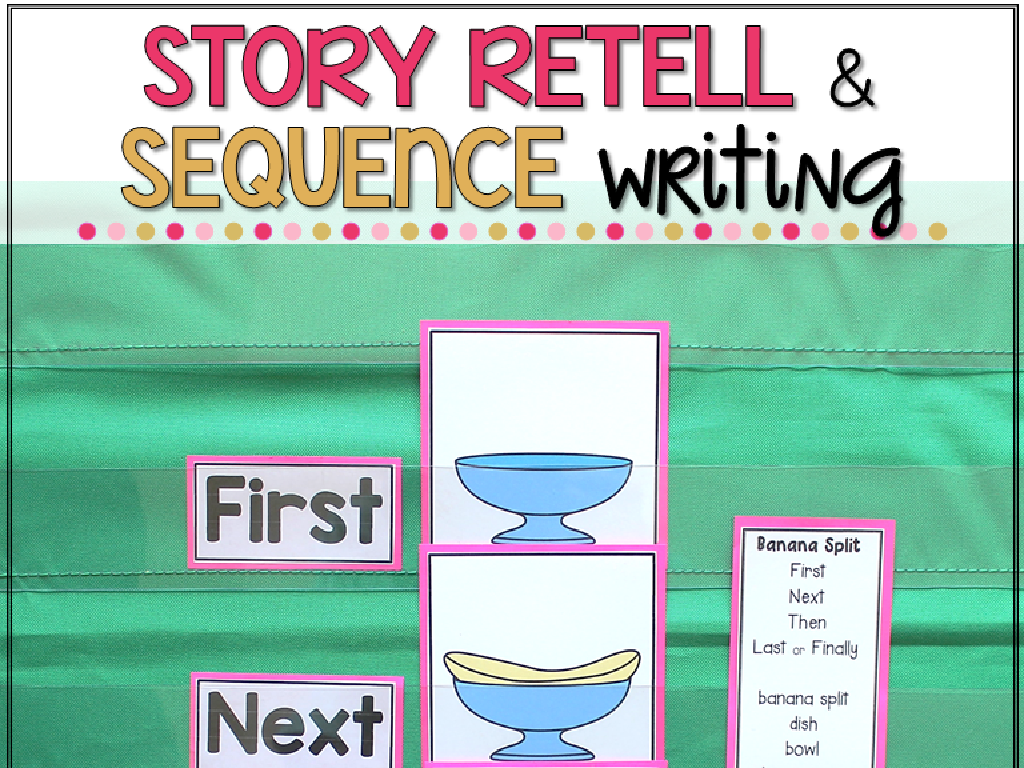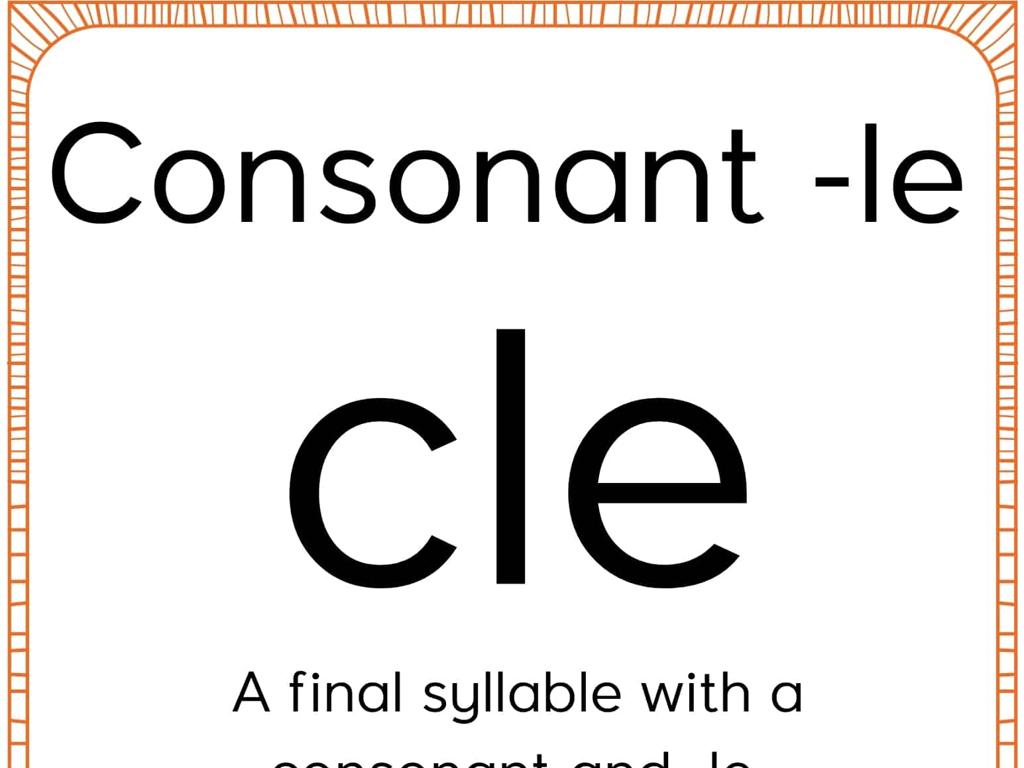Subtraction Word Problems - Up To Three Digits
Subject: Math
Grade: Second grade
Topic: Subtraction: Three Digits
Please LOG IN to download the presentation. Access is available to registered users only.
View More Content
Welcome to Subtraction Wizards!
– Subtraction is like magic!
– It helps us every day
– Think of spending money or sharing treats
– Learn to subtract big numbers
– Numbers up to 999 can be subtracted
– Solve real-world problems
– Use stories to practice taking away numbers
|
This slide introduces second graders to the concept of subtraction with larger numbers, up to three digits. Emphasize that subtraction is a useful skill that can feel like magic once mastered. Relate the concept to everyday scenarios such as spending money or dividing items among friends to make it relatable. Explain that they will learn to subtract numbers as big as 999, which may seem challenging but is very doable with practice. Encourage them by saying that they will use fun word problems, which are like stories, to learn how to subtract. This will set the stage for engaging and interactive learning. Prepare to walk through a few examples in class and have a variety of word problems ready for different skill levels.
Understanding Subtraction
– Subtraction means taking away
– Like 5 toys, and you give away 2, how many left?
– It shows how many are left
– If you start with 10 stickers and lose 3, how many do you have now?
– Example: 5 apples – 2 eaten
– Start with 5 apples, eat 2, you have 3 apples left
– Subtraction finds the difference
– Difference between 8 marbles and 3 marbles taken away
|
This slide introduces the concept of subtraction to second graders. Subtraction is explained as the process of taking one number away from another, which helps us determine the remaining amount or the difference between two numbers. Use everyday examples like apples, toys, or stickers to illustrate subtraction in a relatable context. The example provided uses apples to show a simple subtraction problem, which is a practical way for students to visualize the concept. Encourage students to think of their own examples of subtraction from daily life. During the lesson, engage the students with similar word problems to strengthen their understanding.
Subtraction Vocabulary
– Minuend: Starting number
– The biggest number in subtraction
– Subtrahend: Number taken away
– The smaller number you subtract from the minuend
– Difference: Subtraction result
– What you get when you subtract the subtrahend from the minuend
– Practice with examples
– Use real-life scenarios to understand these terms
|
This slide introduces the basic vocabulary of subtraction to second graders. The minuend is the largest number from which we subtract; it’s like the whole amount we have before taking some away. The subtrahend is the amount we remove from the minuend, and the difference is what we have left after the subtraction. To help students grasp these concepts, use relatable examples such as ‘If you have 5 apples and eat 2, you have 3 left. Here, 5 is the minuend, 2 is the subtrahend, and 3 is the difference.’ Encourage students to come up with their own examples and to practice identifying the minuend, subtrahend, and difference in various subtraction problems.
Solving Subtraction Word Problems
– Word problems are number stories
– Read to find numbers to subtract
– Identify minuend, subtrahend, difference
– Minuend is what you start with, subtrahend is what you take away, and difference is what you have left.
– Practice with a subtraction story
– Example: If you have 123 apples and give away 45, how many do you have left?
|
This slide introduces second graders to the concept of subtraction word problems. Emphasize that word problems are like stories that involve numbers, and it’s important to read them carefully to understand what numbers are involved and what needs to be subtracted. Explain the terms minuend, subtrahend, and difference using simple language and examples. Minuend is the number we start with, subtrahend is the number we take away, and the difference is what’s left after subtraction. Use a relatable story problem to practice identifying these components and solving the problem. Encourage students to visualize the problem and use manipulatives if necessary to aid their understanding.
Solving Subtraction Word Problems
– Understand the problem
– Olivia has some stickers and gives some away.
– Find minuend, subtrahend, difference
– Minuend is 123, subtrahend is 45, what’s the difference?
– Use visuals to help solve
– Draw pictures of stickers to subtract.
– Practice with numbers
|
This slide introduces students to solving subtraction word problems with up to three digits. Start by reading the problem about Olivia’s stickers aloud and ensure students understand the scenario. Explain the terms ‘minuend’ (the number we start with), ‘subtrahend’ (the number we take away), and ‘difference’ (the result after subtraction). Use visual aids like pictures of stickers to make the subtraction tangible and easier to grasp. Then, guide students through the process of solving the problem with actual numbers, reinforcing the concept of subtraction. Encourage students to visualize the problem and to check their work by adding the difference and the subtrahend to see if it equals the minuend.
Solving Subtraction Word Problems
– Write numbers from the story
– Find the numbers in the problem and write them down.
– Subtract smaller from bigger
– Always take away the smaller number from the bigger number.
– Check if the answer makes sense
– Does your answer fit the story? Let’s make sure!
|
This slide is aimed at teaching second graders how to approach subtraction word problems that involve three-digit numbers. Start by reading the problem carefully and identifying the numbers involved. Write these numbers down clearly. Then, guide the students to subtract the smaller number from the larger one, ensuring they understand the concept of ‘taking away’. After finding the answer, it’s crucial to revisit the problem to check if the answer is logical within the context of the story. Encourage students to ask themselves if the answer makes sense. Provide examples of word problems and solve them together as a class, then let students try some on their own or in small groups.
Let’s Practice Subtraction Together!
– Carlos’ marble count problem
– Carlos had 256 marbles and lost 128. How many does he have now?
– Identify parts of subtraction
– Minuend: 256 marbles, Subtrahend: 128 marbles, Difference: ?
– Use visuals to subtract
– Draw or use blocks to represent the marbles and take away 128.
– Calculate the remaining marbles
|
This slide is an interactive class activity designed to help students practice subtraction with a word problem. Start by reading the problem about Carlos’ marbles aloud. Ask the students to visualize the problem, perhaps by drawing marbles or using physical counters. Guide them to identify the minuend (the total number of marbles Carlos had), the subtrahend (the number of marbles he lost), and the difference (the number of marbles Carlos has left). Encourage them to use visual aids to help understand the subtraction process. After they have worked through the problem, discuss the solution as a class. This activity will help reinforce their understanding of subtraction and how to solve word problems.
Class Activity: Crafting Subtraction Stories
– Create a subtraction story
– Swap stories with a friend
– Solve your friend’s problem
Use subtraction methods we’ve learned for 3-digit numbers.
– Discuss both stories and solutions
Explain how you solved the problem.
|
This activity is designed to engage students in creating their own subtraction word problems, which helps them understand the concept more deeply. Encourage creativity in their stories, and remind them to include numbers up to three digits. After writing their stories, students will exchange their problems with a classmate to solve, applying their subtraction skills. Finally, they will share their original problem and the solution they found for their classmate’s problem with the class. This will foster communication skills and allow them to see different approaches to subtraction. For the teacher: Prepare to guide students who may struggle with creating problems or with subtraction. Have additional practice problems available for fast finishers. Possible activities could include creating illustrated storybooks of their problems, solving additional problems from the teacher, or using manipulatives to visualize the subtraction.
Review: Subtraction Word Problems
– Key points of subtraction problems
– We learned to subtract numbers up to three digits.
– Understanding the story’s importance
– The story helps us know what to subtract.
– Practice leads to improvement
– Keep practicing at home!
– Try more problems to get even better!
|
In today’s lesson, we covered how to solve subtraction word problems that involve numbers up to three digits. We emphasized the importance of understanding the story in the problem to identify which numbers to subtract. It’s crucial for students to grasp the context of the problem to apply subtraction correctly. We also discussed that becoming proficient in subtraction requires practice. As homework, students should continue practicing with additional word problems to reinforce their skills. Encourage them to explain their thought process and the story behind each problem they solve. This will not only help them with math but also enhance their reading comprehension and problem-solving abilities.






